Ohio’s Most Unusual Museums
From a Guinness World Record-setting assemblage of troll dolls to a hall of fame that celebrates the age-old trade of barbering, take a tour of these quirky museums.
Sept./Oct. 2022
BY Erin Finan, Liam Morrison, Emma Shinker, Jim Vickers and Elise von Gunten | Photo by Jim Vickers
Sept./Oct. 2022
BY Erin Finan, Liam Morrison, Emma Shinker, Jim Vickers and Elise von Gunten | Photo by Jim Vickers
The Troll Hole Museum
Sherry Groom’s museum offers an interesting and insightful look at all things troll and showcases her Guinness World Record collection of the lovable little dolls.
Sherry Groom’s tribute to the troll started out as a collecting hobby. Then, one day her husband suggested she may have more of the little, wild-haired dolls than anyone else in the world. Turns out, he was right.
“Like all things, it starts with a single step and takes you on a journey you never anticipated,” says Groom, who opened her Troll Hole Museum in downtown Alliance in 2014 as part of an effort to create a city arts district. “It just grew and grew and grew … People donated trolls, solicited me to purchase their collections at very reasonable prices.”
Since opening, the museum has evolved to include not only Groom’s now-Guinness World Record-certified collection of more than 9,000 troll dolls but also rooms that explore the Scandinavian lore surrounding the mythical creatures. (Stark County-based artist David McDowell helps lend an air of authenticity throughout the museum. One room is made to look like a cabin with a “troll tooth” and other pseudo artifacts on display.)

After purchasing tickets for one of the tour times in the museum’s first-floor gift shop, visitors ascend a flight of steps to a second level with fun displays, including a mini version of the Pro Football Hall of Fame’s Tom Benson Hall of Fame Stadium filled with trolls decked out in the gear of different NFL teams. From there, the guided tour heads through rooms that explore troll lore and their appearances in pop culture.
The experience is fun and interesting, and the knowledgeable tour guides provide insightful information about the long history of troll dolls, while also sharing how Groom built her record-setting collection.
Tour takers then descend a set of stairs, where they are surrounded by Groom’s Guinness World Record collection, neatly arranged in rows, from floor to ceiling. It is fun to hunt for familiar favorites and discover the very wide range of troll dolls made over the years. The collection continues to grow, too. Many people who learn about the museum send Groom their collection of troll dolls.
“It’s an interesting phenomenon, all the donations,” she says. “They just can’t throw them away. They can’t dump them at Goodwill. They need to find a home for them.”
228 E. Main St., Alliance 44601, 330/596-1157, thetrollhole.com
Read more about The Troll Hole Museum >>>
---
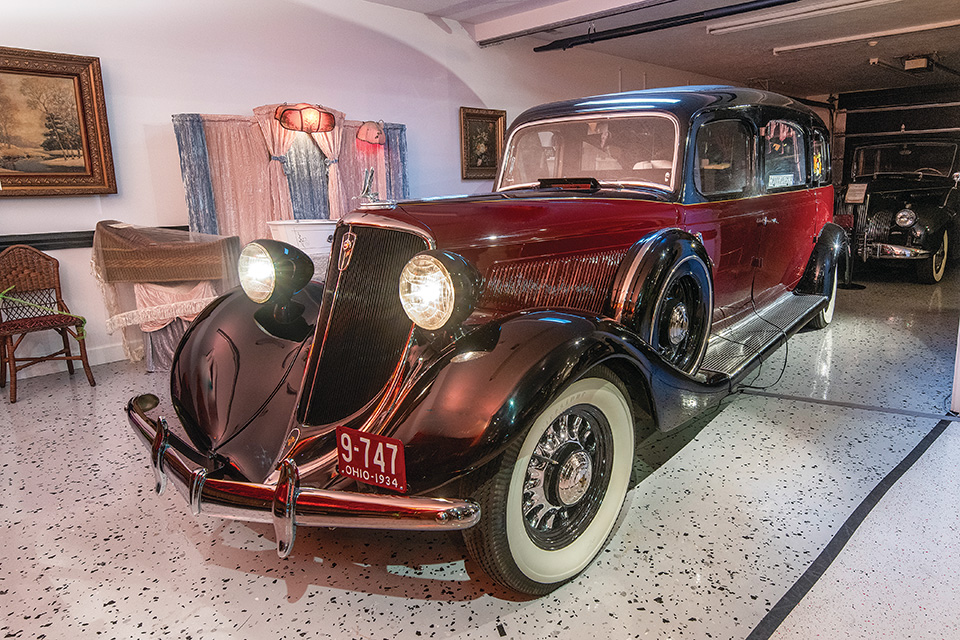
Peoples Mortuary Museum
Bill Peoples’ museum showcases the history of funeral directing and our cultural traditions surrounding how we mourn the dead.
Visitors first enter a small room containing several decades-old black and white photographs depicting family funerals. Each serves as a window into the past and sets the proper tone for the serious, yet insightful, collection Bill Peoples has assembled just across the parking lot from his Cawley & Peoples Funeral Home in Marietta.
Peoples has been a licensed funeral director since 1971, and during that time he has accumulated items that showcase the business of funeral directing and how it evolved from the 1850s to the mid-1950s. He opened Peoples Mortuary Museum in the small garage adjacent to his business in 2005, when he realized his collection had become too extensive to merely keep in storage.
“It’s very rewarding to be able to share our history with other folks,” says Peoples, who secured the items from industry peers throughout the Midwest. “Funeral homes were notorious for never throwing anything away.”
The collection includes items ranging from antique jewelry with lockets of hair that were once worn during the mourning period to embalming equipment, including a table and portable setup that was used during the time when the practice was done in a person’s home. The hundreds of pieces highlight important parts of the mourning process and serve as a tribute to the history of funeral directing.
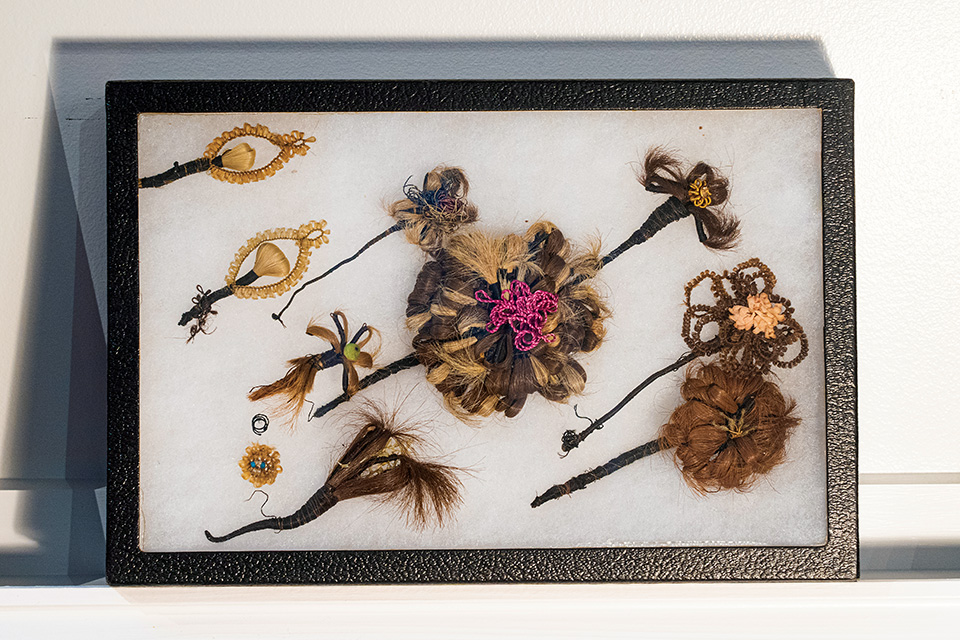
One of many fascinating items in the collection is an icebox coffin, which was traditionally used for viewings when a person died of an infectious disease. To prevent the spread of any contagions, the body would be surrounded by ice to cool it down, and a viewing window protected others from contracting the illness.
There are several vintage funeral automobiles on display as well, such as 1938 and 1940 Packards, a 1927 Henney and a 1934 Studebaker that Peoples still uses for funerals today. The museum also has three horse-drawn hearses dating back to the late 19th and early 20th centuries.
Peoples offers guided tours of his museum by appointment free of charge, although donations are welcome. His goal is to highlight the significance and importance of the traditions related to how we say a final goodbye to those close to us.
“It’s part of living,” Peoples says. “It’s a matter of how to cleanse your mind ... move on with your life and get on with the important things with all the living people around you.”
408 Front St., Marietta 45750, 740/373-1111, cawleyandpeoples.com
---

Famous Endings Museum
The walls at John Herzig’s Famous Endings Museum are filled with a who’s who of notable names, from John Glenn to John Belushi and Abraham Lincoln to Elizabeth Taylor. The Dover funeral director’s collection of memorabilia and artifacts from the funeral services of famous people started as a hobby but has since grown into a destination that highlights the stories and lives of noteworthy people who have shaped our world. Discoveries abound, including a replica of the puppet Lamb Chop handed out at ventriloquist Shari Lewis’ funeral and a flashlight from the “Star Trek” actor James “Scotty” Doohan’s service (“Beam Me Up,” get it?). The museum opened in 2015 in a room at Toland-Herzig Funeral Home that was previously used to displays caskets. Since then, it has taken on a life of its own. 803 N. Wooster Ave., Dover 44622, 330/343-6132, tolandherzig.com
Read more about John Herzig’s Famous Endings Museum >>>
---
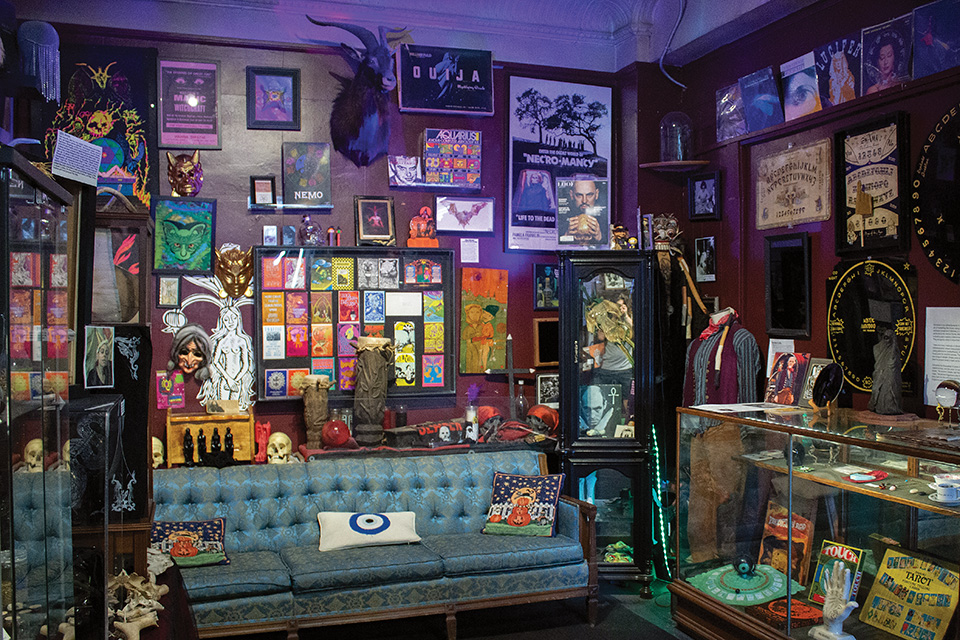
Buckland Museum of Witchcraft & Magick
Raymond Buckland began amassing objects tied to the history of witchcraft and the occult in 1966. His collection lives on at a small museum in Cleveland.
Raymond Buckland grew up in England, but he garnered fame for bringing Wicca — a modern pagan religion that draws from ancient influences and traditions — to the United States. During his life, he collected objects tied to witchcraft and the occult, and more than 200 of them are on display in Cleveland’s Old Brooklyn neighborhood.
Visitors can browse Buckland’s intriguing collection that fills two rooms at the Buckland Museum of Witchcraft & Magick. The hourlong guided tour allows museum director Steven Intermill to provide insight about objects that catch visitors’ interests. One of Intermill’s favorite pieces in the collection is a mandrake (a root of a plant that some believe has magical powers) that is more than 200 years old and carved to look like a pregnant woman.
“This would have been used by an actual practitioner and the local healer,” Intermill explains.
Buckland, who assembled the collection during his world travels, was introduced to Wicca when he met Gerald Gardner, an English Wiccan who operated a Museum of Magic and Witchcraft. After moving to the United States, Buckland lived in Long Island, New York, where his own museum began to take shape in his basement.
The museum, which Buckland claimed was the first of its kind in the U.S., provided an anthropological approach to the subject. He moved the collection to New Hampshire and then Virginia during the 1970s, before placing it in storage, where it remained for years. In 2015, two years prior to his death, Buckland gifted the collection to Toni Rotonda, who opened the Buckland Museum of Witchcraft & Magick with Intermill in 2016. Despite its unusual subject matter, Intermill says the museum is a place where everyone can learn.
“No matter what you are interested in,” he says, “[if] you have a curious mind or have an open heart — come see us.”
Tickets must be purchased in advance. 2155 Broadview Rd., Cleveland 44109, bucklandmuseum.org
---
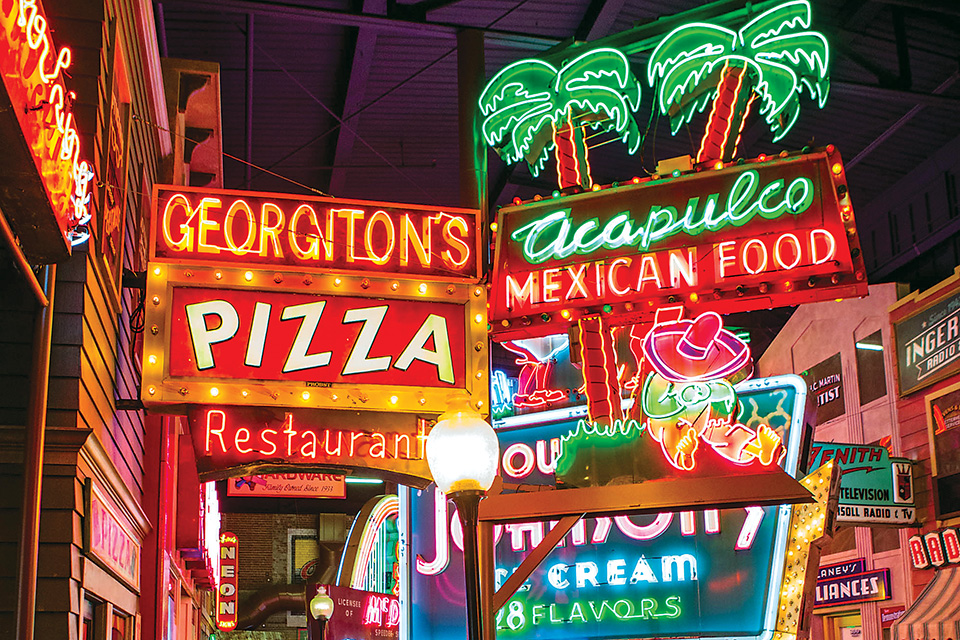
American Sign Museum
There was a time in the United States when a warm glow bathed the roadsides of our nation, trumpeting the presence of hotels and restaurants, gas stations and drugstores. The American Sign Museum in Cincinnati embraces that bygone era of advertising artistry with an extensive collection of lighted signs that provide both a fun history lesson and great photo opportunities. (The mock Main Street built within the museum to display signs you would find along a stretch of downtown is a particularly fun touch.) The oldest signs here stretch back to the late 19th century, but many, including the enormous, single-arch McDonalds sign, are mid-20th century treasures. Tod Swormstedt, who spent 30 years working for the sign trade magazine Signs of the Times, put his expertise to work building his collection. He opened the museum in 2005 before moving it to its current 20,000-square-foot location in 2012. An expansion doubling the museum’s size is in the works. 1330 Monmouth Ave., Cincinnati 45225, 513/541-6366, americansignmuseum.org
Read more about American Sign Museum >>>
---
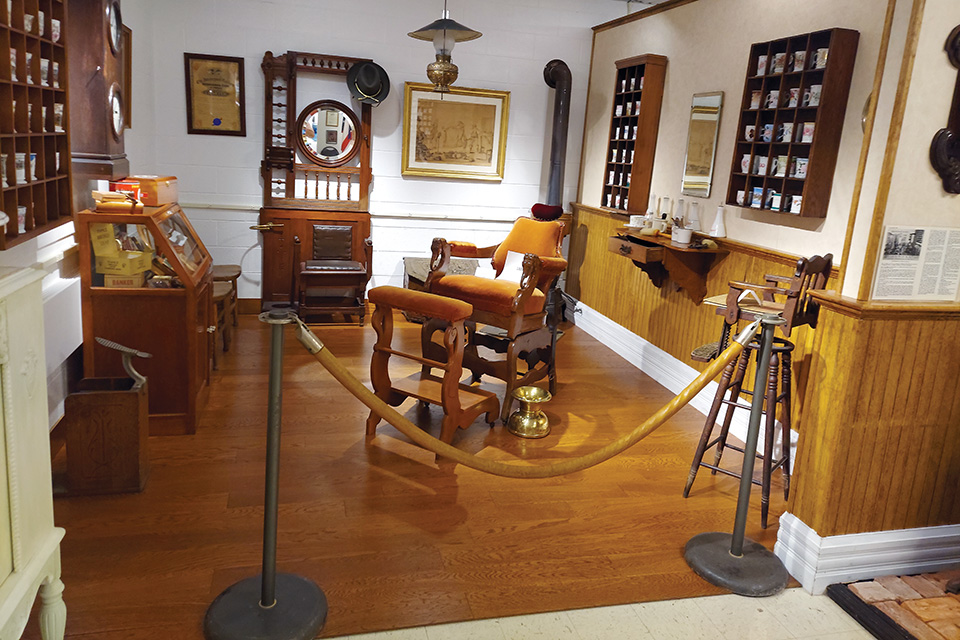
National Barber Museum and Hall of Fame
Along with providing fresh haircuts, barbers once served as surgeons and dentists — just one bit of history you’ll learn about the trade at this unique destination.
The simple entrance looks unassuming, but step inside the National Barber Museum and Hall of Fame, and you’ll find twirling barber poles, antique barber chairs and everything you never realized you wanted to learn about the age-old trade. Originally the personal collection of local barber and founder Ed Jeffers, the museum in downtown Canal Winchester has grown since 1978 to fill six rooms with a history of the profession.
“The fun part of this is the stories that go behind a lot of the items,” says director and curator Mike Ippoliti, who guides tours of the museum.
Visitors can schedule a tour to learn about the artifacts displayed here, which include razors, clippings of former President Dwight Eisenhower’s hair and various styles of barber chairs. Other artifacts don’t seem immediately tied to the trade, such as the mandolin and clarinet a barber and his wife used to play between customers at their shop in New Orleans.
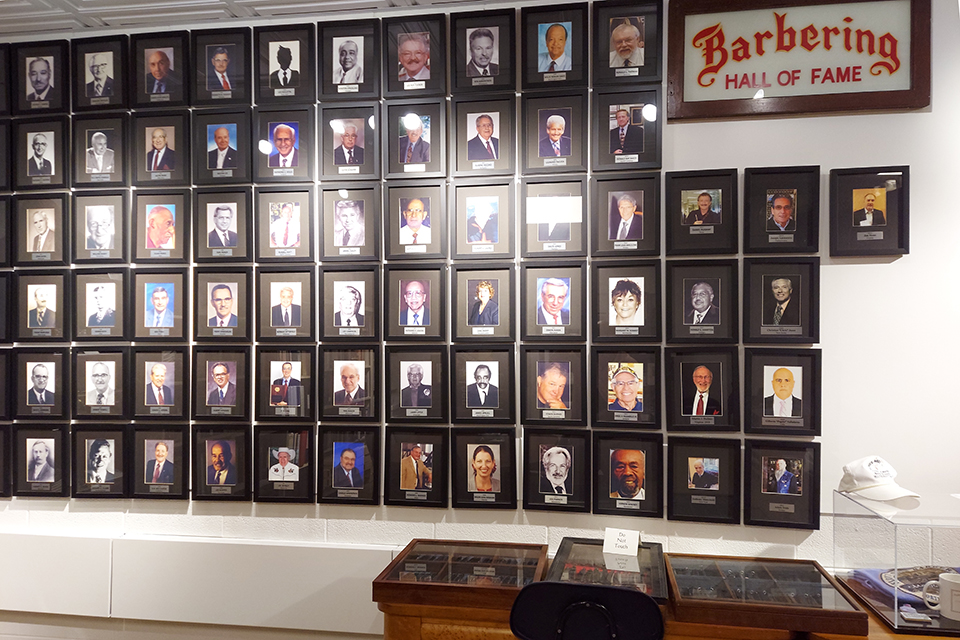
The most attention-grabbing pieces in the collection are the 75 barber poles, which symbolize the long history of barbershops. The white, blue and red stripes represent bandages, veins and blood, respectively — a remnant of medieval Europe, where barbers were also surgeons and dentists. (The collection even includes bowls used for the outdated practice of bloodletting.)
The museum also houses more than a 2,500 shaving mugs, and a Whimsical Room dedicated to artwork related to barbering, from a Norman Rockwell collector plate to unusual aftershave bottles. A tour also takes visitors through the Hall of Fame, which celebrates the more than 70 inductees who have contributed to both barbering and the wider world. It’s the personal customer connections forged by those honored here — and others like them — that make barbering a profession worth celebrating with a museum. As Ippoliti says, “The barbershop was always a gathering place.”
135 Franklin St., Canal Winchester 43110, 614/837-8400, nationalbarbermuseum.org
--
Early Television Museum
Steve McVoy worked in a television-repair shop as a teenager, a pursuit that found him at times working on sets that dated back to the technology’s early days. He went on to a decades-long career in cable television, but his admiration for old-school TVs never waned. McVoy’s collection on display at the Early Television Museum in Hilliard began with an antique 1939 set he picked up on eBay. In the years that followed, he purchased others and in 2001 bought a space to show off the hardware. Today, the museum features more than 150 sets, which are arranged according to era, beginning with mechanical sets and continuing on through the early days of color TV. Each one has a small placard that denotes its original price, alongside the average annual wage and the cost of a gallon of gasoline for context. 5396 Franklin St., Hilliard 43026, 614/771-0510, earlytelevision.org
--
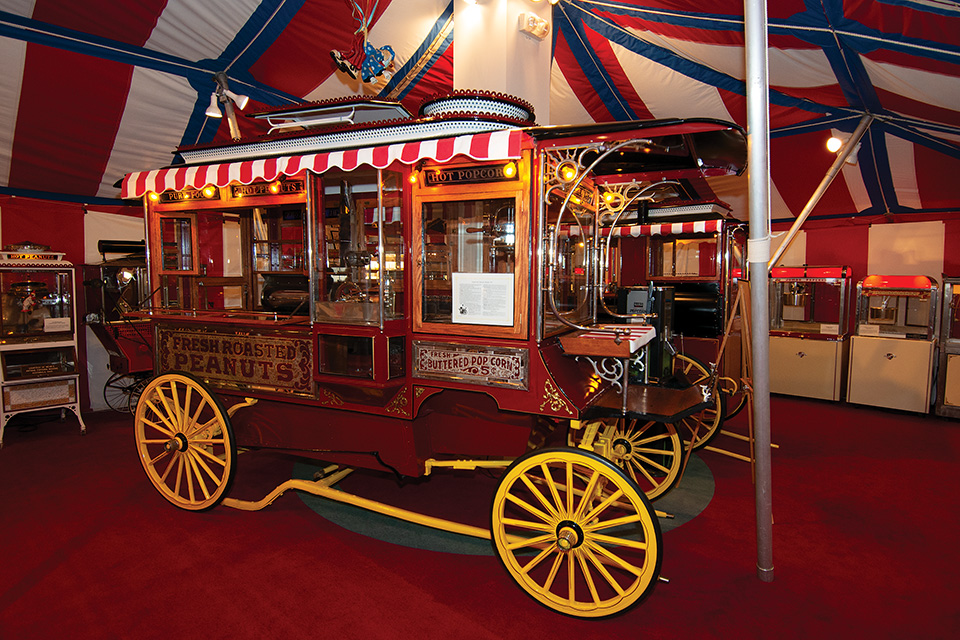
Wyandot Popcorn Museum
Browse a collection of restored antique popcorn poppers in this city with long ties to the timeless snack food.
The smell of fresh popcorn greets visitors as they step under the Wyandot Popcorn Museum’s red, white and blue circus tent. A free box of it waits at the end of your visit, but that comes after a trip through the history of antique popcorn poppers, from the late 1800s through the 20th century.
Housed within the Marion County Historical Society’s Heritage Hall, the Wyandot Popcorn Museum highlights the city’s long ties to the classic snack. George Brown, whose father founded Wyandot Popcorn (now known as Wyandot Snacks) in 1936, began acquiring popcorn-related antiques and displaying them for the public in 1981. His initial acquisition was an 1899 Cretors No. 1 popcorn and peanut wagon. Today, it is one 34 beautifully restored large antique popcorn poppers on display at Heritage Hall, which is housed in Marion’s historic U.S. Post Office building.
“[Brown] wanted it to be shared,” says Brandi Wilson, executive director of the Marion County Historical Society. “Popcorn was in his blood. … This was the legacy he left.”
Popcorn wagons like the ones at the Wyandot Popcorn Museum were historically used by street vendors and helped popcorn gain popularity, especially when set up outside of theaters to entice moviegoers with the snack’s buttery scent. The museum also showcases other types of popcorn machines, a collection of Cracker Jack prizes stretching back to 1912 and lots of popcorn-related history.
Other notable pieces on display include three Holcomb and Hoke “Butterkist” machines that separate the popped and unpopped kernels before individually “kissing” each with butter. (The machines can still be operated to show visitors how they work.) Wilson’s favorite piece in the museum is a 1911 Dunbar-brand wagon that actor and Newman’s Own founder Paul Newman used to promote his line of popcorn during the 1980s.
For those who just can’t get enough popcorn, the city of Marion hosts a three-day festival each year during the second week of September that celebrates Wyandot Snacks’ long presence in the city.
“During World War II, when the soldiers would pass through our train depot, we had a canteen and one of the things they would give out was popcorn balls,” Wilson says. “Sugar was rationed at the time, so there were a lot of folks giving up their sugar so that they could make these popcorn balls.”
169 E. Church St., Marion 43302, 740/387/4255, wyandotpopcornmus.com
---
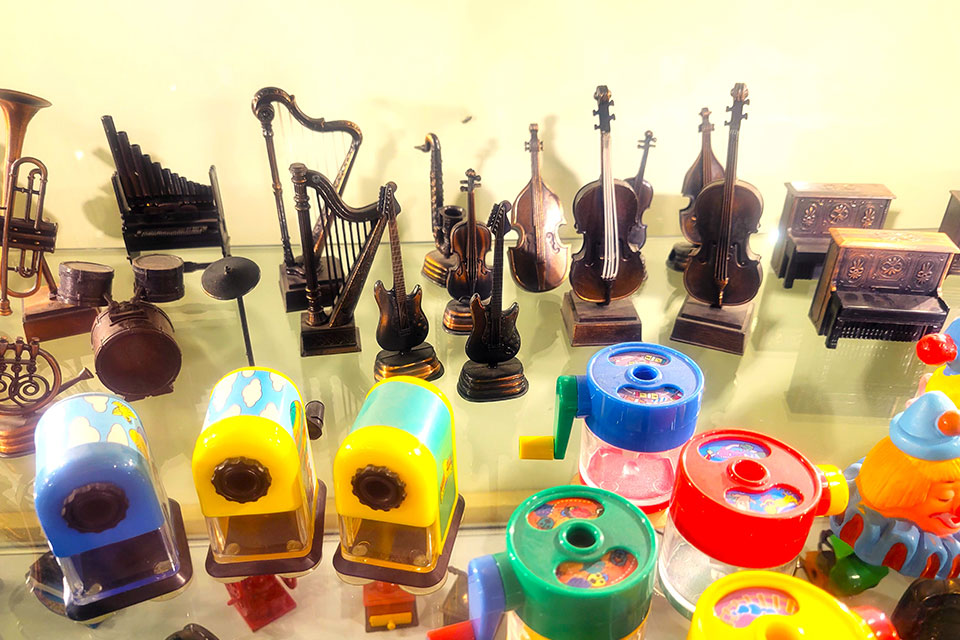
Paul A. Johnson Pencil Sharpener Museum
The feat contained within the Paul A. Johnson Pencil Sharpener Museum is a labor of love: a collection of more than 5,000 novelty pencil sharpeners in a range of shapes and styles displayed thematically across enclosed shelves. The collection started with the late Rev. Paul A. Johnson who first presented it inside a shed in his yard and welcomed passersby to stop in to see his array of pencil sharpeners. Following Johnson’s death in 2010, the collection — shed and all — was moved to Hocking Hills Regional Welcome Center in Logan. In 2022, the shed needed replaced, so the Hocking Hills Tourism Association began plans for a new structure to house the museum, which opened in early 2024 and incorporated the collection of fellow pencil sharpener fan, the late Frank Parades of Florida. 13718 St. Rte. 664 Scenic, Logan 43138, explorehockinghills.com
---
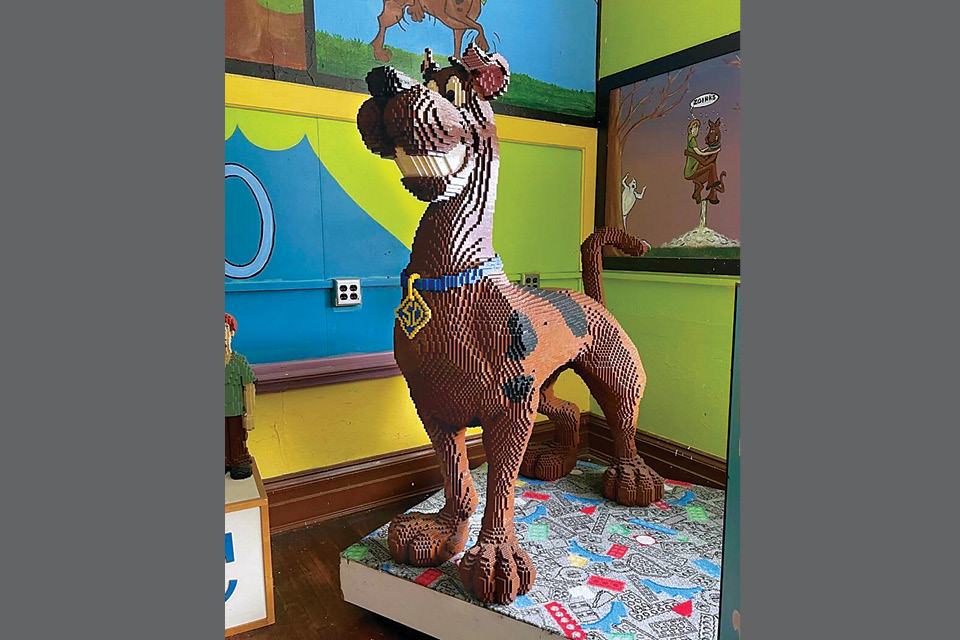
Brick Museum
Dan Brown’s unofficial Lego museum holds dozens of intricately assembled creations across three floors of a former school. The place was originally supposed to be storage for Brown’s Lego collection after it had outgrown his home, but then he couldn’t get people to stop showing up and asking to see it. Billed as the world’s largest private collection of Legos, the Brick Museum contains Lego displays, art and sets, including an animatronic Lego band and life-size versions of pop culture legends Darth Vader and Scooby-Doo. There are even two rooms where visitors to the museum can join in on the fun of creating themselves. The museum is open Tuesday through Sunday from around mid-May through August and weekends only in September and early October. 4597 Noble St., Bellaire 43906, 740/671-8890, brickmuseum.com
--
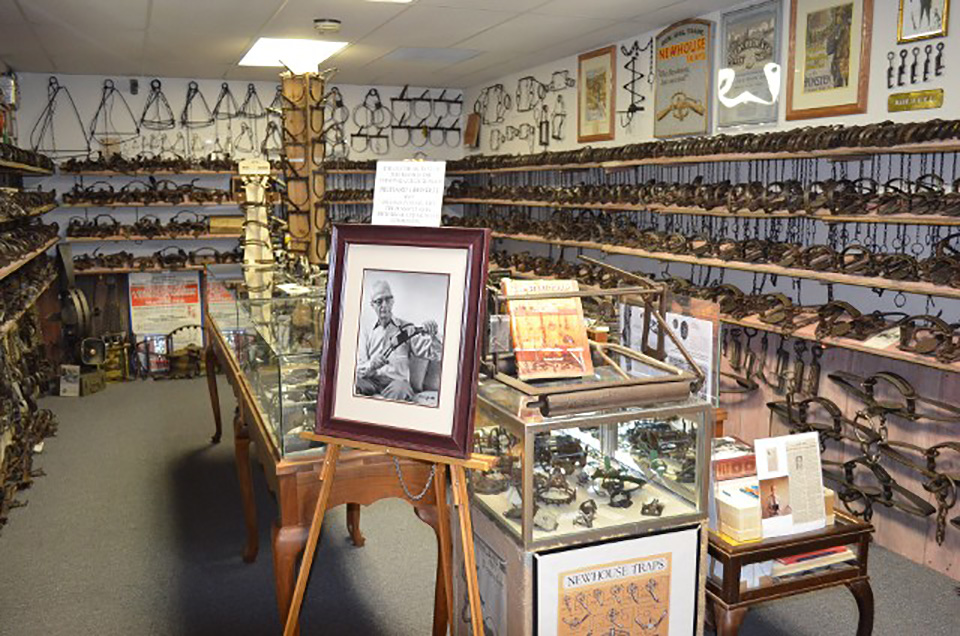
Trap History Museum
Tom Parr always had an interest in animal trapping and the devices that hunters have used over the years to do so. In his younger days, Parr trapped for mink, muskrat and raccoon. He later joined a group called the North American Trap Collector’s Association and today serves as its president. Parr’s Trap History Museum features more than 4,000 different devices used to trap a wide variety of animals and historic items tied to the fur trade. Originally located inside his Galloway home, Parr later moved the collection to another building on his property, and travelers must make an appointment to stop in to see it. 6106 Bausch Rd., Galloway 43119, 614/878-6011, traphistorymuseum.com
Related Articles
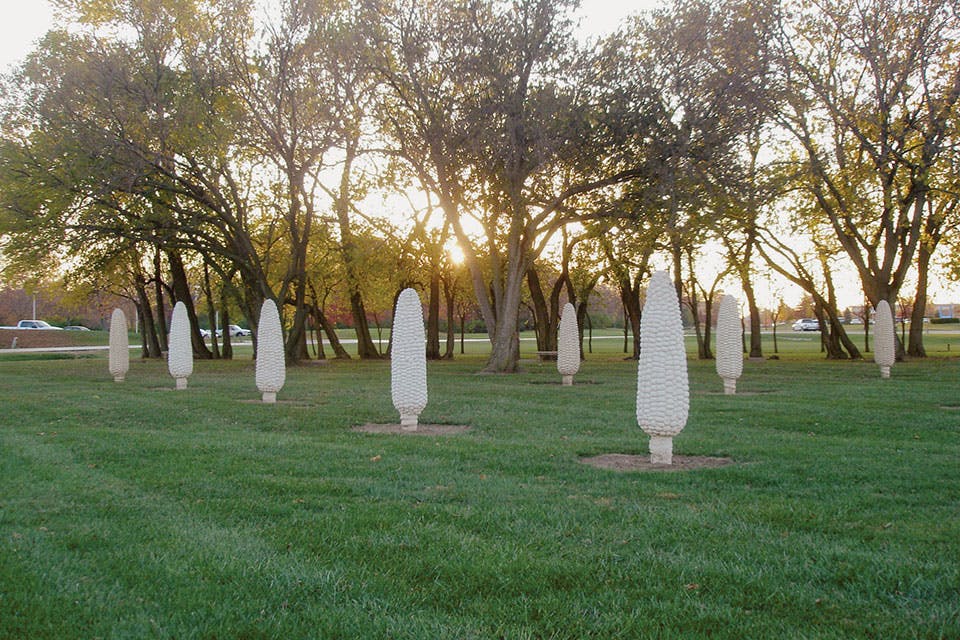
Road Trips: Ohio Roadside Finds
These curiosities provide a glimpse into local heritage, Ohio history and sheer creativity. They also make for some great social media moments. READ MORE >>
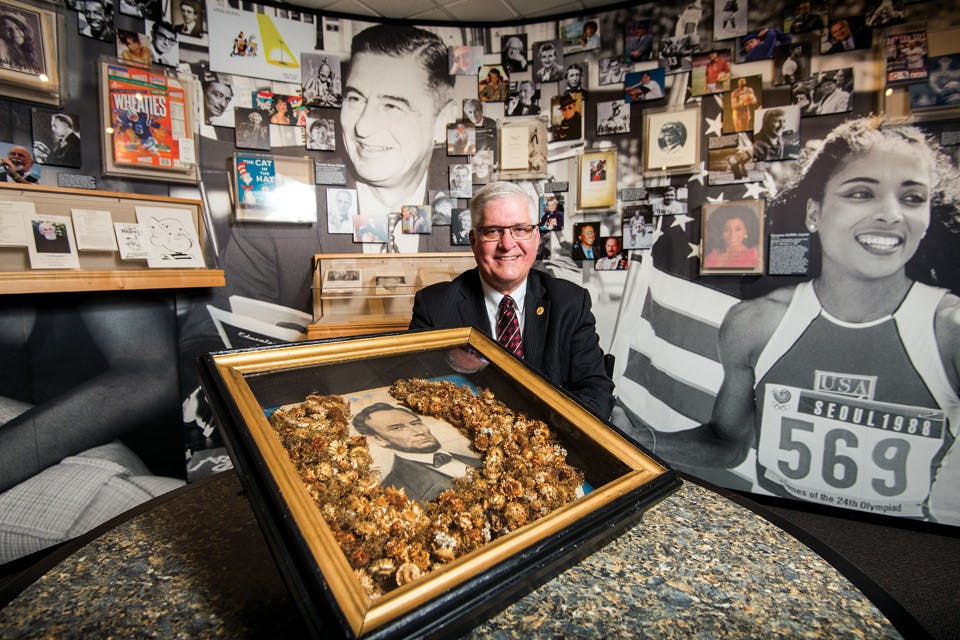
John Herzig’s Famous Endings Museum
The Dover funeral director collects memorabilia from services held for celebrities and historical figures.
READ MORE >>
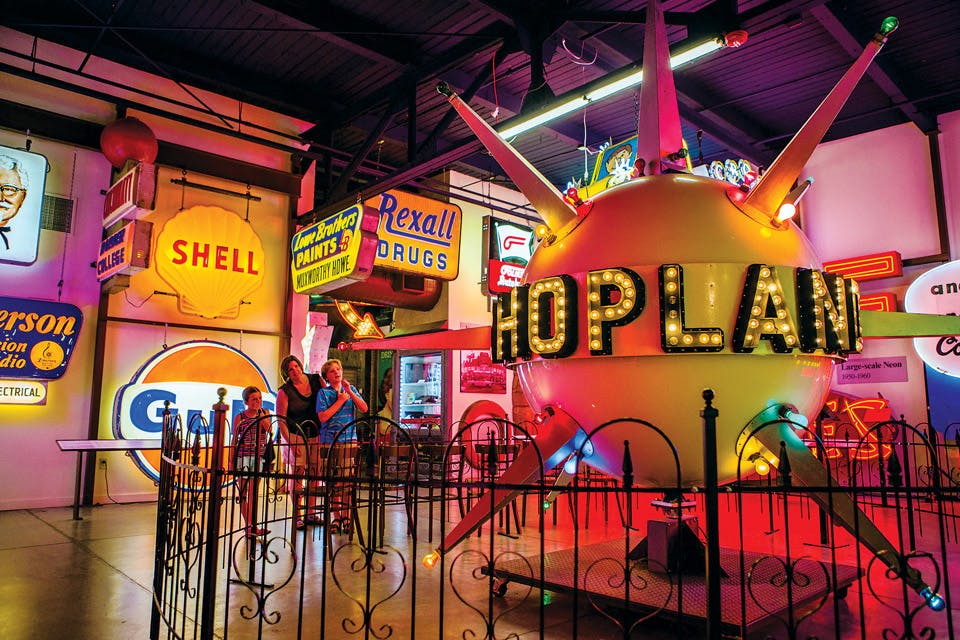
Ohio Road Trips: Quirky Museums
These attractions showcase corners of pop culture and American heritage in fun environments everyone will love. READ MORE >>



